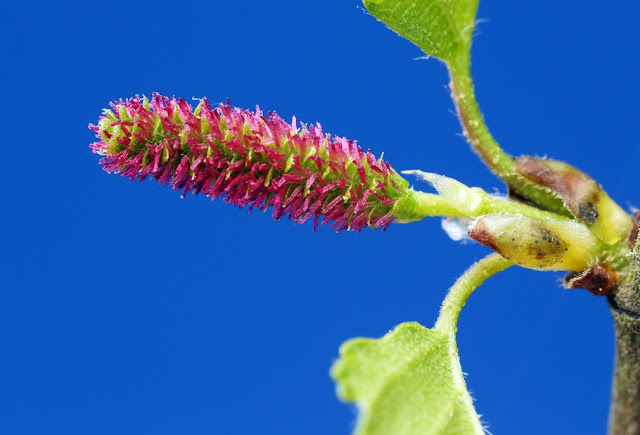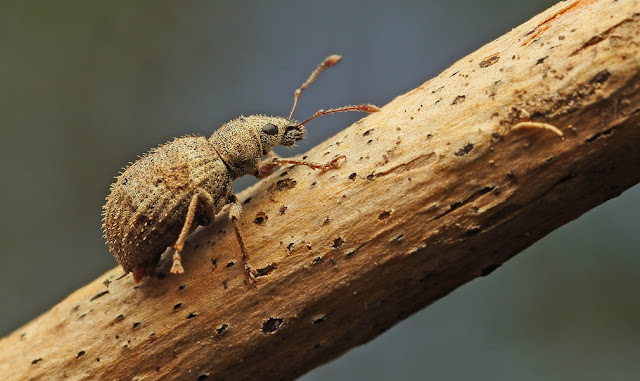Time for another update, and after all the silliness and frivolity of the past few episodes, I am attempting to post a "sensible" update, as requested (the other request was a physical impossibility).
So; 'Titter ye not'...
Here cungs poto nunger one then (excuse my diction, I am trying to keep a stiff upper lip)...
 |
| Do you mind keeping the noise down, I've got a splitting head! |
I guess that lots of us are using the lockdown time to do some clearing out at home? Well anyway, I decided on a whim that a good spring clean of my studio would be in order. Tucked down between the carpet and skirting was this mummified caterpillar exoskeleton. It must have been there a few years I guess and looks like one of the hawk-moths.
How about a caterpillar that is very much alive now...
 |
| A Pale Brindled Beauty Moth Caterpillar - Phigalia pilosaria |
Well that's what I think it is anyway: as I always say though, I am only an amateur and as 'they' are always messin' with names, for all I know it could now be known as a Hairy-pimply Lockdown Looper! Oh yes, for any of you eagle-eyed chaps or chapesses, I do think it has recently moulted (or molted if you are in the USA) and I do think that is the discarded moult, extreme bottom left of this photograph.
Note the safety line attaching the caterpillar to the leaf too. Some caterpillars use a safety line of silk (produced from glands in their mouths) much like a bungee cord, so that they don't actually hit the ground and can later crawl back up to continue grazing.
Sometimes, if you are very lucky and in the right place at the right time, you will be presented with a photo opportunity that you cannot decline: your subject will be sitting pretty, with a nice clean background and all you have to do is point the camera and press the button. That's an abridged version of the story of this next bee photograph...
Even so, as this lovely bee was so very compliant, I took half a dozen photos just to ensure I had at least one useable one. In fact something very rare happened; they were all useable. I think they call that Sod's/Murphy's law? I think that's the appropriate axiom...or is that when things are bound to go wrong?
Oh come on! It's not that scary is it? This is a crab spider (Thomisidae) and I think it is Xysticus species: in fact I think it is 'Xysticus lanio'. I think that because somebody told me that's what it is. As always though, I am not 100% positive; especially as this species is listed as 'Uncommon, regional' and 'scarce in southern and eastern England', which is exactly where I am.
By the way, crab spiders because yes, they can walk sideways and backwards like crabs.
Luckily this is my humourless update, and so I will be making no jokes pertaining to the female anatomy: instead I shall just inform you that this is an Oak Gall and possibly an Acorn Plum Gall. If that's correct, then the gall is formed by the wasp 'Amphibolips quercusjuglans'.
Well that's what I call it. You have to admit it looks like it has a lemon for a body?
Perhaps the yellow one is gravid? Oh yes, they have the remarkable ability to change colour too.
"How many spiders are too many?"
That was a rhetorical statement by the way. So let's move on to something you might find more palatable shall we.
Recent years have seen a real drop in the number of true bugs that I am seeing, and so finding good numbers of these Rhopalid bugs in local woodland a few days ago was heartening. This family is closely related to the Squashbugs and consists of 11 species.
I did also find this tiny bug; this time in the garden. These teeny green bugs (3-5mm) can be real tricky to identify from a photo and so I think my best guess here would be Orthotylus species.
I'll leave you with this first photograph of a nut weevil for this year...
I think that everything points to this being Curculio nucum rather than C.glandium. Especially given it was seen on hazel and this species is associated hazel, whereas it's oak for C. glandium.
(This video will be too large to show in the emailed version - you will need to view online)
That was a rhetorical statement by the way. So let's move on to something you might find more palatable shall we.
 |
| Rhopalus subrufus |
I did also find this tiny bug; this time in the garden. These teeny green bugs (3-5mm) can be real tricky to identify from a photo and so I think my best guess here would be Orthotylus species.
I'll leave you with this first photograph of a nut weevil for this year...
I think that everything points to this being Curculio nucum rather than C.glandium. Especially given it was seen on hazel and this species is associated hazel, whereas it's oak for C. glandium.
(This video will be too large to show in the emailed version - you will need to view online)
























































